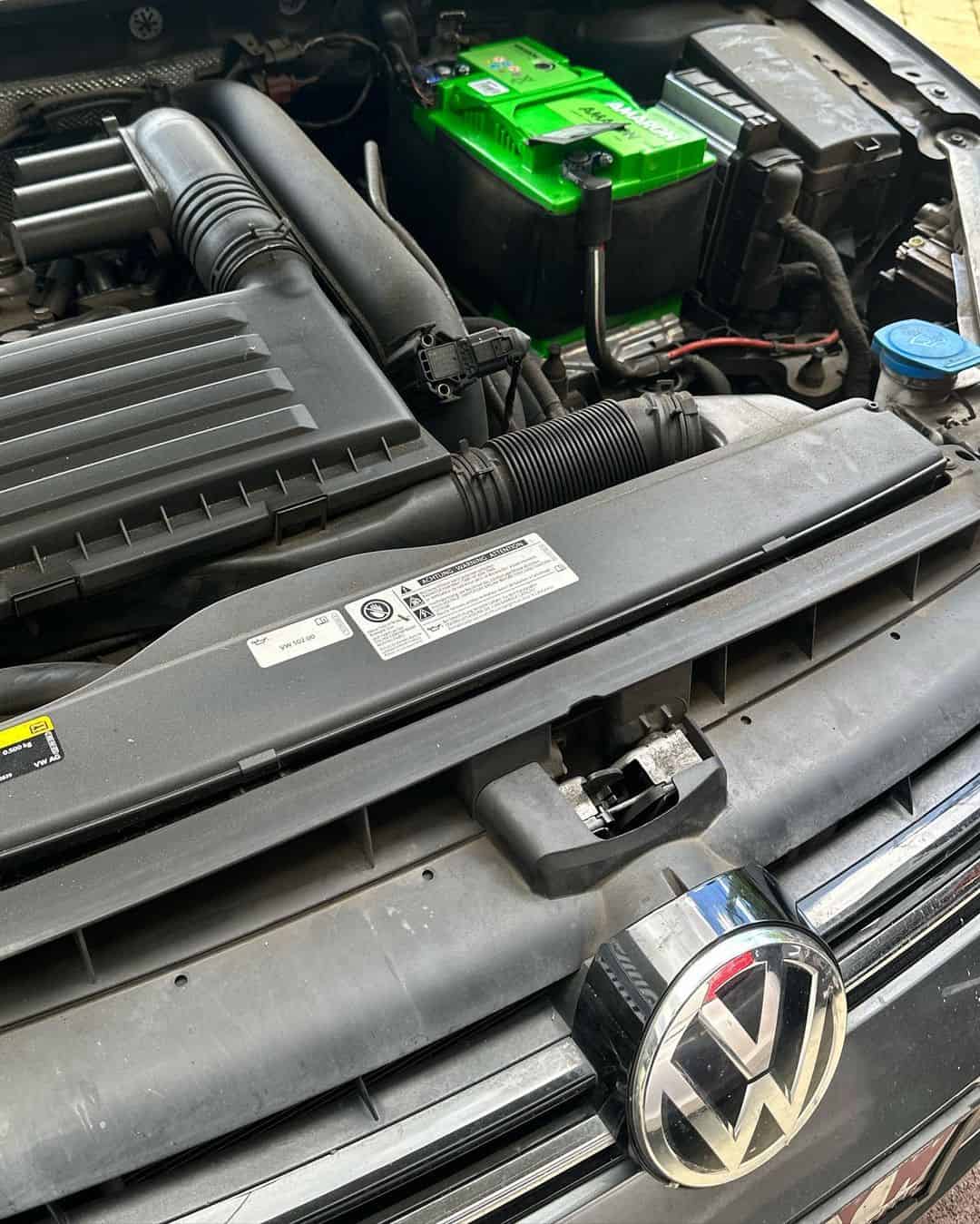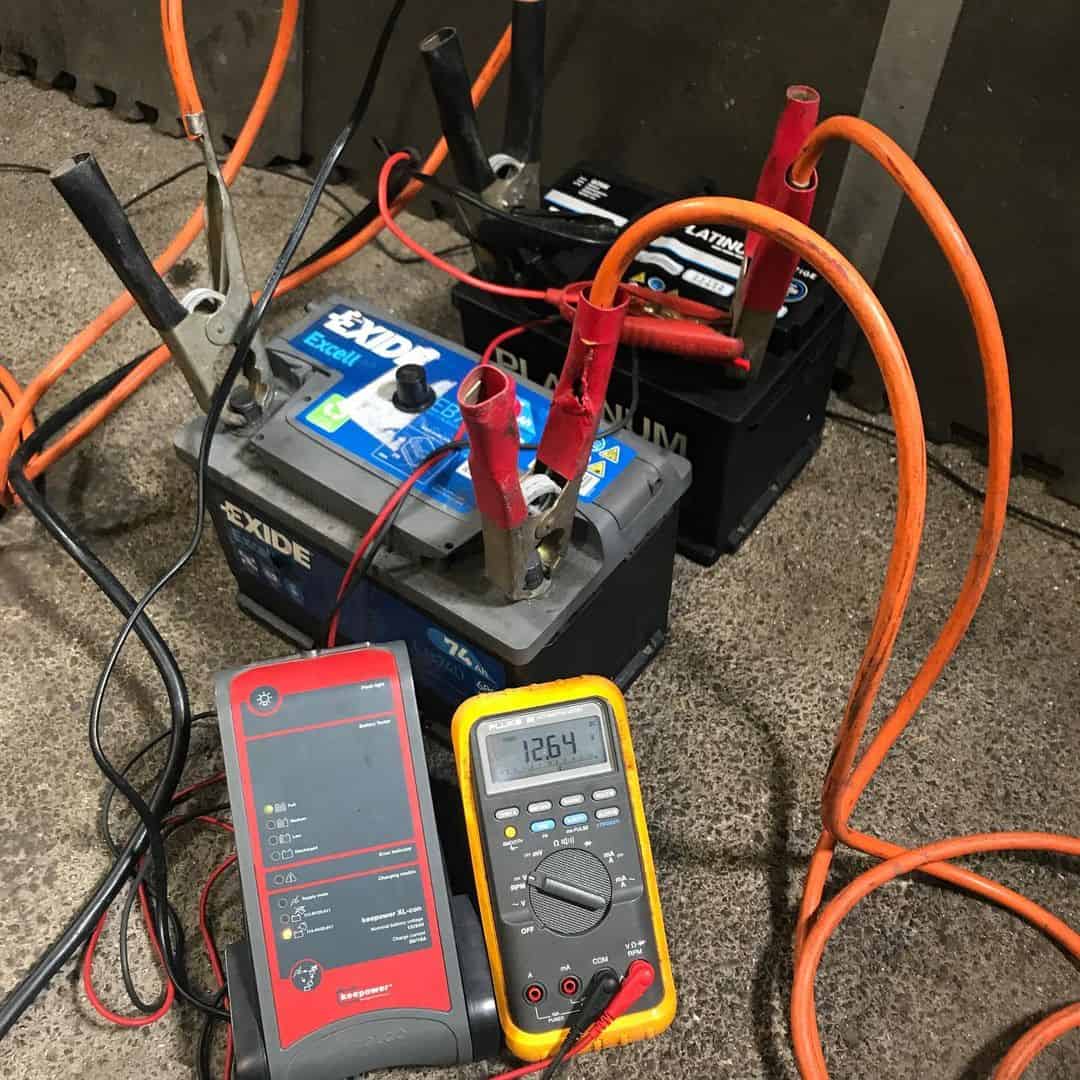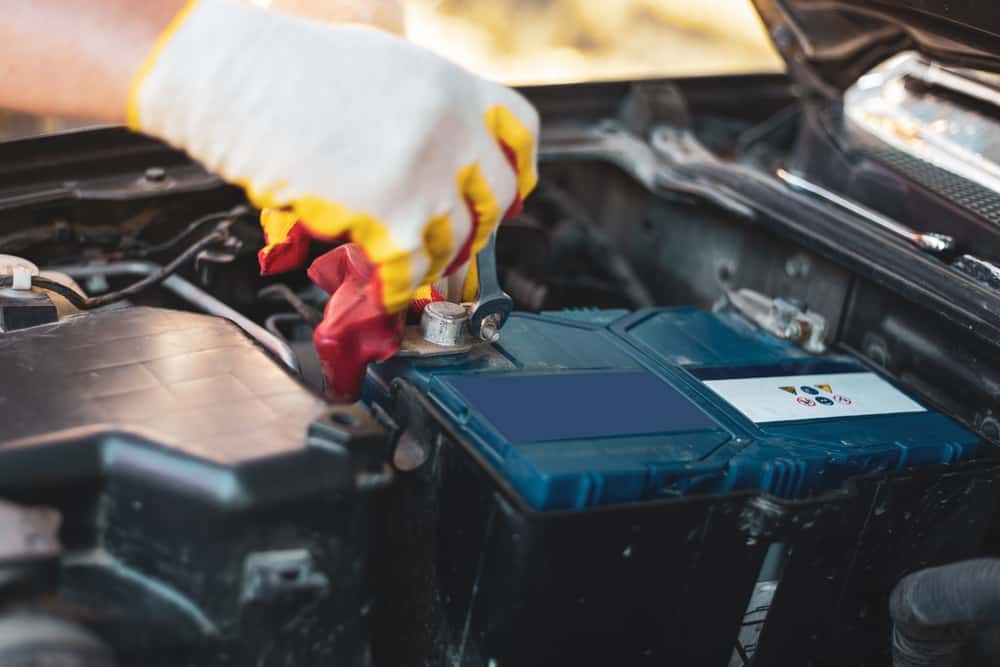To know what car battery size you need, you must first determine your battery’s group size. While you can find the answer in the battery section of your owner’s manual, there are other ways to gauge the appropriate size, and other aspects to consider.
Choosing the right battery size and the correct battery type for your automotive vehicle is imperative. Installing an incompatible battery will only result in several performance issues, as these batteries are required for ignition and provide power to the vehicle’s electrical components.
Now that we’ve covered some basics about battery size, keep scrolling as we share a complete guide to installing a new car battery while considering each of their specifications.
Table of Contents
How to Determine the Car Battery Size?
1. Battery Group Size
While many battery sizes are available, the Battery Council International (BCI) has standardized these physical dimensions in millimeters and inches. A two-digit group number followed by an alphabet denotes these battery sizes.
These assigned codes contain information like the vehicle’s model, make engine type, and feasible battery size for the car. Knowing the group size of your battery is a crucial step when replacing your battery.
Knowing the battery size won’t be an issue if you have your battery’s owner manual around. Most battery retailers also provide reference guides to determine the battery group size. Here are some standard battery sizes compatible with different car manufacturers.
- Size 75 is a feasible choice for vehicles made by General Motors.
- Size 35 is compatible with Honda, Toyota, and Nissan cars,
- Size 34/78 is the preferred choice for Chrysler and general motor vehicles.
- Size 65 is the choice for Lincoln, Mercury cars, and Ford Vehicles.
1. Standard Top Post Batteries
Most vehicles made in the US and Japan use a group size for batteries with top-post battery fittings. Getting the group size is crucial because several group sizes might fit in well inside the tray but have a shorter or taller height, resulting in poor fitting. Inadequate group size can result in a short circuit, spark, or even a vehicle fire.
2. Recessed Top Post Batteries

European car manufacturers like BMW, Mercedes Benz, and Audi use a typical style of battery where the battery’s top posts are in the corners and are recessed.
These battery fitments have a ventilation system that is considered a part of the battery and can be installed anywhere in the car, as opposed to many car batteries that can only be installed in the car’s hood. 41, 22, 47, and 48 are the typical group sizes used.
3. Side-post batteries
Several car manufacturers use specific group sizes. For example, General motor prefers using a side post battery with typical group sizes ranging from 70 to 78.
Other Factors to Consider When Choosing a Car Battery
1. Battery’s Reserve Capacity
The RC rating measures when a battery can supply a minimum voltage to run the vehicle if components like the fan belt or alternator break down. If the battery’s RC capacity is excellent, it can quickly run the car when the alternator doesn’t work.
You can’t just select a battery with the most reserve capacity, as it can damage the vehicle’s electrical components. Instead, refer to the owner’s manual and inquire about your vehicle’s reserve capacity from the manufacturer. These RC ratings are denoted in minutes and can be easily identified.
2. Battery’s Cold Cranking Amperage
Choosing a battery with the correct CCA will start your vehicle even in freezing cold weather. During extreme cold, the vehicle’s engine oil starts thickening and affects the battery’s performance. This rating is calculated according to the car’s specifications. Here’s how you can know the battery’s CCA:
- Never choose a battery that has a higher or lower CCA rating than what’s mentioned by the car manufacturer.
- Refer to the owner’s manual to choose the battery according to the car’s specifications.
- Contact your vehicle manufacturer or visit a certified battery replacement center to know the same CCA rating and other specifications.
3. Battery Specifications
Besides having different sizes, car batteries vary as they have different terminal types, polarity, mounting systems, number of amps, voltage, the number of cells, ampere-hour (ah) rating, and cold cranking amps.
Knowing these specifications is necessary as a battery can have the same size but varying minimum voltage, CCA, number of cells, and other variations. A battery with the same group size might fit in the vehicle but only power the engine if a battery with the correct specifications is installed.
When Do We Need Battery Replacement?

It depends on the type of battery being used, the vehicle’s requirements, the weather conditions, and your driving. The amp-hour rating of the battery can provide an estimate of the battery’s longevity. However, most batteries generally have an average life of three to six years, after which a battery replacement becomes imperative.
Most batteries can only be used for a certain amount of charge cycles. This means that these batteries can be fully charged or discharged for a certain number and have to be replaced accordingly.
Hot weather is the most evident cause that results in battery failure. The acid in lead acid batteries quickly evaporates during high temperatures and increases the lead plates’ corrosion rate.
In contrast, when the temperature drops, the battery’s effectiveness decreases. When the temperature drops, the electron flow inside the battery slows down, reducing the energy output of the battery.
Types of Batteries Used in Vehicles
1. Lead-acid Batteries
It’s the most common type of car battery consisting of a durable plastic casing enclosing cells submerged in battery acid. The lead plates or cells inside the battery correspond to the negative and positive terminals. However, these batteries cannot perform better than modern batteries like the lithium battery and are the most inexpensive battery type you can purchase.
2. Absorbent Glass Mat Batteries
AGM batteries are an expensive type but provide the best cyclical stability. These batteries have a strong build that resists vibrations and does not lose its charge when not in use. While these batteries will cost a lot, they can last much longer than most battery types.
AGM batteries were introduced for military vehicles but made it to the consumer market due to their longevity and reliability. The battery has fiberglass mats soaked in battery acid instead of lead plates.
3. Wet Cell Batteries

Wet cell or flooded batteries are similar to lead acid batteries but are specifically designed by battery manufacturers for automotive use. While you have to refill the battery acid from time to time as it evaporates when the battery is being used, wet cell batteries are sealed, use a semi-solid electrolyte instead of battery acid, and don’t require maintenance.
There are two main types of wet-cell batteries:
- SLi Batteries provide short bursts of power to the vehicle to power its engine, lights, and related electrical components. After the initial ignition, the alternator takes on the charge and provides power while the car runs.
- The deep cycle or marine battery lasts longer than Sli batteries and is designed to act as a long-term energy delivery solution. Even if the battery is deeply discharged over and over again, it won’t affect the battery’s health.
4. VRLA Batteries
Wave-regulated lead acid batteries, or VRLA batteries, are sealed and don’t require gas venting. Unlike conventional lead-acid batteries, these batteries don’t release hydrogen gas and are considered safe for usage in non-ventilated spaces.
The AGM batteries we mentioned earlier are a type of VRLA battery. The second type of VRLA is a gel cell battery containing a gel-based electrolyte rather than a semi-solid electrolyte used in AGM batteries. Gel cell batteries are highly resistant to heat, durable enough to absorb impact, and sealed, minimizing spoilage.
Bottom Line
It’s crucial to install the right size because a loose battery will eventually be thrown around and damaged. Putting in the working battery will only lead to frequent car breakdowns. and poor performance.
While choosing a car battery according to the size, amperage, voltage, and reserve capacity might be confusing for some, sticking to the group size and battery type by referring to your vehicle’s owner’s manual can make your search for the correct battery size easier.
